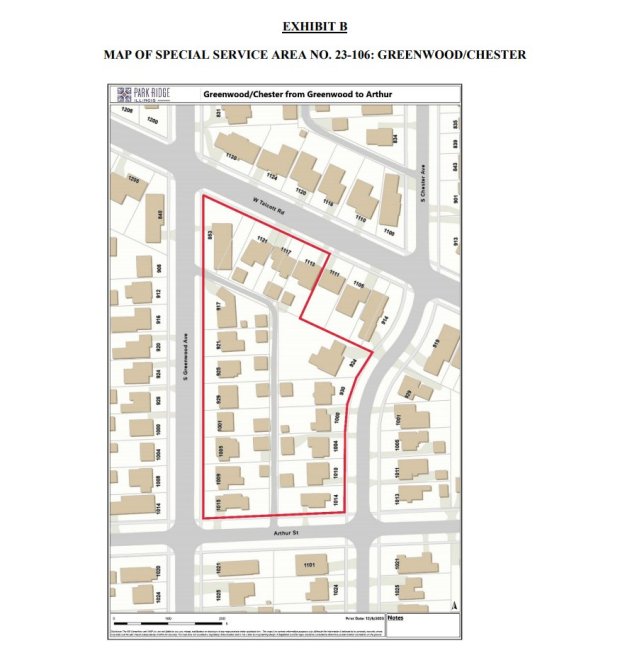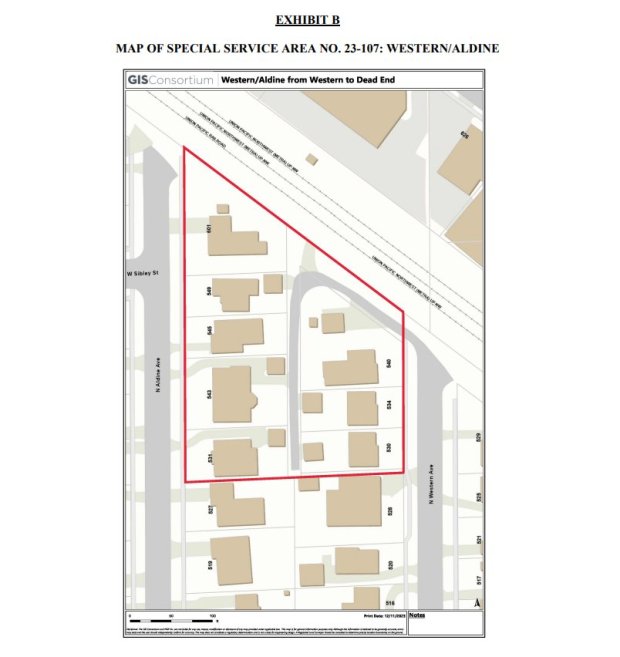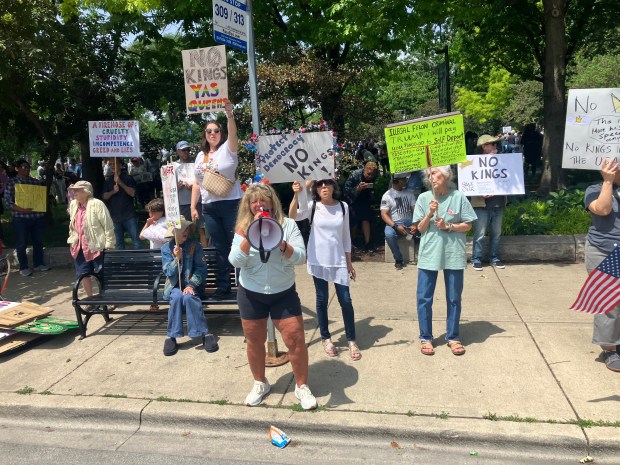The Park Ridge City Council approved an engineering contract to design four new environmentally green alleys in the city at the Feb. 20 Committee of the Whole meeting. However, for each approved green alley, each resident who lives nearby must pay about $10,000 towards the cost.
According to Public Works Director Sarah Mitchell, the city is creating eight more green alleys after it completed the construction of its first two in 2022.
The green alleys to be built in 2024 are located between South Greenwood Avenue and Chester Avenue south of Talcott Road and between North Western Avenue and Aldine Street, south of the railroad tracks.
On average, the cost to build a green alley is $400,000 and residents who live directly next to a green alley are required to pay half of that cost. Mitchell said an individual household would pay an average of $10,000 for the green alley.
A green alley differs from a regular alley in that its surface allows water to be collected through its permeable brick paver surface, Mitchell told Pioneer Press. According to Mitchell, the water is then reintroduced to the groundwater or stored in a granular base, a layer of several different gradations of stone approximately three feet deep, to keep from taxing the local sewer system during a rainstorm.
Besides having a smooth surface to drive on, Mitchell said people who live next to a green alley don’t have to worry as much about flooding, and they get less dust. Park Ridge residents who don’t live next to a green alley would also benefit because the stormwater the alley collects won’t impact the sewer system.
The City Council approved the contract for an engineering company to design the next four green alleys for a cost of $186,000, per city documents.
In his State of the City speech, Mayor Marty Maloney said the city currently has about 50 unpaved alleys, most filled with gravel. When the city decides where the next green alleys will be built, those gravel alleys will be eligible to be turned into green alleys if residents approve it.
The city’s procedure it to send petitions to all residents living next to an unimproved alley. From there, residents must return the petitions with most of the homeowner’s signatures. The city then sends a second letter to residents to get a formal vote, with a simple majority being the deciding factor.

The city then conducts a lottery to decide the order in which the approved green alleys will be constructed. Mitchell said if a homeowner were to vote no for a green alley, they would still be responsible for paying for their share of the alley if the vote among their neighbors passed. According to Mitchell, residents who live next to an asphalt alley are not billed separately for the maintenance of the alley.
Mitchell said she understands residents’ complaints that the city should pay for the green alley without residents having to shoulder half of the cost. Still, she said the city’s policy is to pay for what is originally installed. “Streets are more generally used by the public than alleys. Alleys, primarily, are just used by residents on that block,” she said.
The city’s plans call for the following alleys to be converted into green alleys:
- Between Garden Street & Des Plaines Avenue, from South Rose Avenue to South Hamlin Avenue.
- Between West Talcott Road & Talcott Place, from Vine Street to South Washington Avenue.
- Between Prairie & West Crescent Avenues, from South Clifton to South Cumberland Avenues.
- Between South Clifton & South Cumberland Avenues, from Stewart to Belle Plaine Avenue.
- Between Belle Plaine & Columbia Avenues, from Harrison Street to Canfield Road.
- Between Belle Plaine & Columbia Avenues, from South Washington Avenue to Harrison Street.
The city will hold a public hearing for the construction of the next green alleys on April 15.




